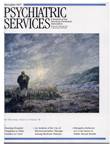Neuroleptic Malignant Syndrome: A Review
Abstract
OBJECTIVE: Neuroleptic malignant syndrome is an uncommon side effect of antipsychotic medications characterized by severe rigidity, tremor, fever, altered mental status, autonomic dysfunction, and elevated serum creatinine phosphokinase and white blood cell count. This paper presents a concise and comprehensive review of neuroleptic malignant syndrome, written with the practitioner in mind, to provide information that will be useful in actual clinical settings. METHODS: MEDLINE was searched from 1966 to 1997 for key reviews, reports on series of cases of neuroleptic malignant syndrome, individual case reports, and other clinically and theoretically important information. Results and conclusions: Virtually all neuroleptics are capable of inducing the syndrome, including the newer atypical antipsychotics. The standard of care for the recognition of neuroleptic malignant syndrome has shifted considerably over the past 15 years. Neuroleptic malignant syndrome belongs in the differential diagnosis of any patient receiving a neuroleptic who develops a high fever or severe rigidity. In addition to measurement of creatinine phosphokinase and white blood cell count, important tests to rule out other etiologies include urinalysis to measure electrolytes, including calcium and magnesium; kidney, liver, and thyroid function tests; lumbar puncture; an electroencephalogram; and a computed tomography or magnetic resonance imaging scan of the head. Although specific treatment remains controversial, supportive treatment such as antipyretics, a cooling blanket, and intravenous fluids to correct dehydration and electrolyte abnormalities is critical and widely supported by consensus. Most patients recover from neuroleptic malignant syndrome in two to 14 days without any cognitive impairment, and new dysfunction usually is attributable to very high fever, hypoxia, or other complications, rather than neuroleptic malignant syndrome per se.



